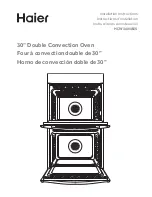
Installation and operation
16 / 36
610839
EN
5.2
Basics of Thermal Processing in Microwave
Instead of traditional heat sources, a microwave oven applies an electron lamp
which emits electromagnetic waves. These waves, like radio waves, are invisible
but their effects can be observed. Such waves can pass through materials such as
glass, porcelain, artificial materials and paper. As these materials do not contain
water, grease or oil, they are not heated by the microwaves. Simply put, the
microwaves directly reach the food product, causing molecules of water, grease
and oil to vibrate; friction results in the creation of heat which is used for defrosting,
heating or cooking. During cooking with microwaves, heat remains inside the
product being prepared, in opposition to the processes of boiling or grilling in which
heat enters the food from the outside. If the device is not damaged, energy created
by the microwaves remains inside the device and does not pose a threat to the
user.
• Carefully place food products to be cooked inside the microwave oven, with
larger pieces at the outer edges.
• Remember the cooking time. It is best to at first set the shortest possible time
and then lenghten cooking time as necessary. Excessive cooking time may
cause the food product to smoke or catch fire.
• Cover food products during cooking. This will ensure even cooking and prevent
splattering.
• Turn food products over while cooking. This will speed up the process of
cooking such products as chicken or hamburgers. Large products, such as a
roast, should be turned over at least once.
• Such dishes as dumplings should, after half of the cooking time has elapsed, be
turned over, moved from the top to bottom, moved from the outside to the
inside, etc.
5.3
Cookware Suitable for Use in Microwave
• Check that a dish is suitable to be used in a microwave.
Test
: place the empty dish together with a glass of water (never activate the
device when empty or with only an empty container inside), then heat at the
highest power level for 60 seconds. An appropriate dish will be lukewarm. If the
dish is hot, it is not appropriate for use in the microwave.
Proper materials for dishes for the microwave allow microwaves to pass
through. Energy goes through the container and heats the food product.
• Do not use metallic containers or containers containing metallic parts (e.g. gold
strips around the edge of a plate). Microwaves do not pass through metal.
Summary of Contents for 18180D
Page 1: ...18180D 610839...
















































